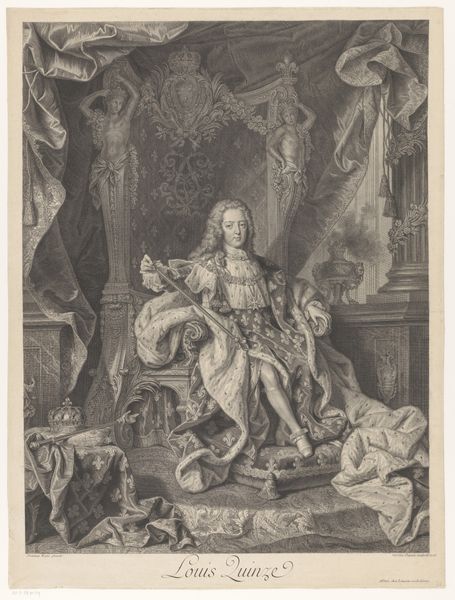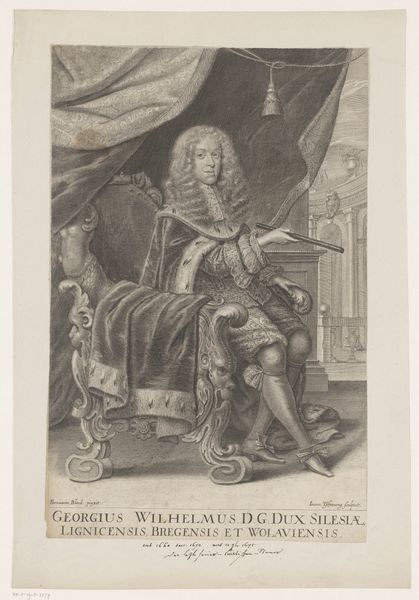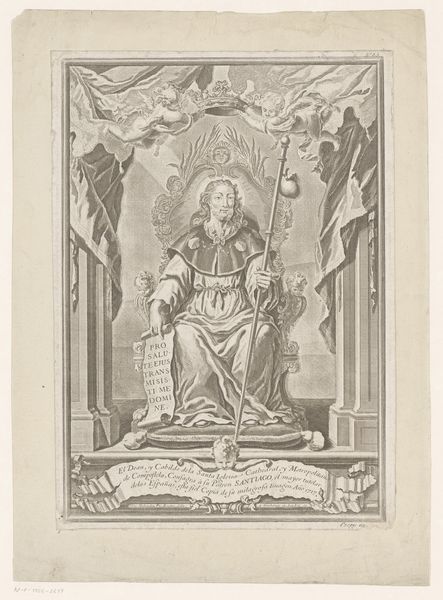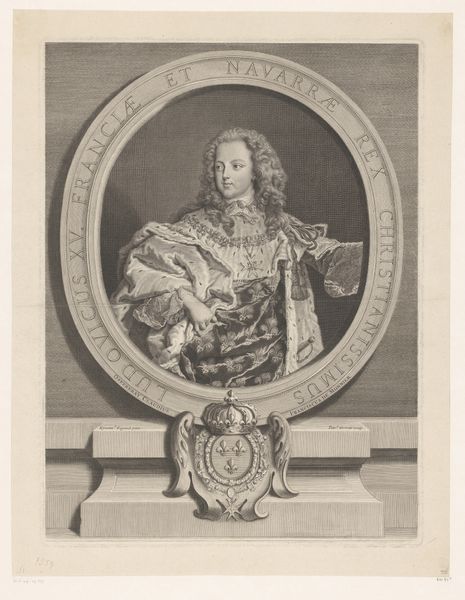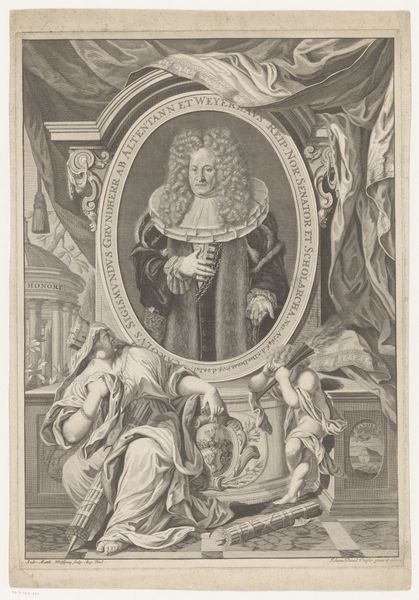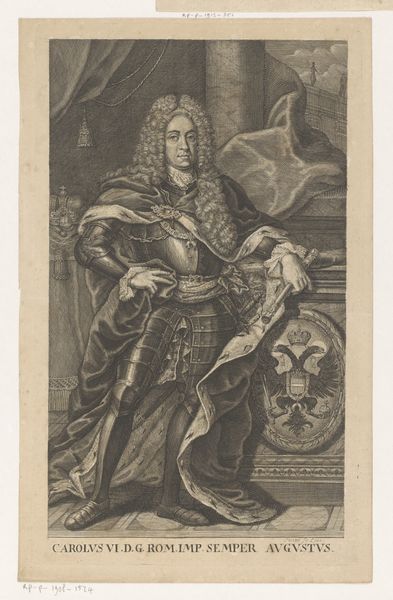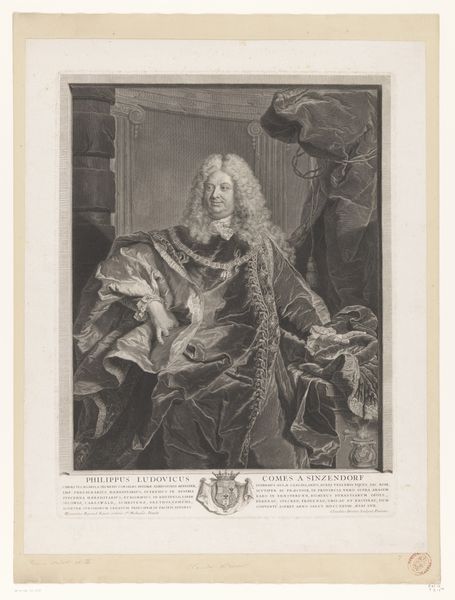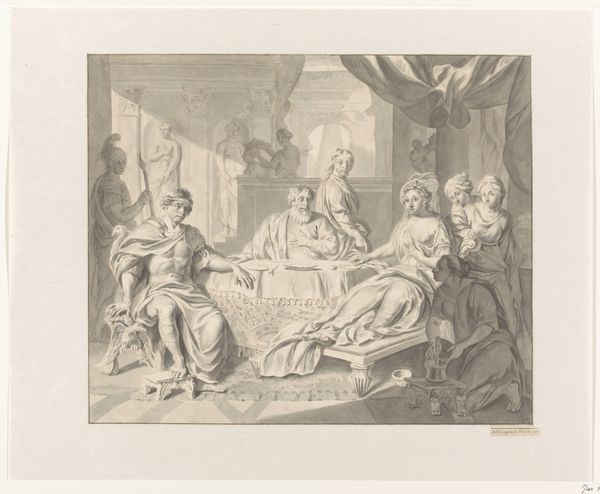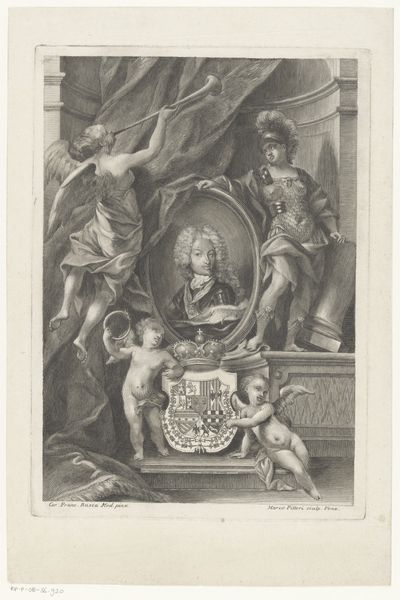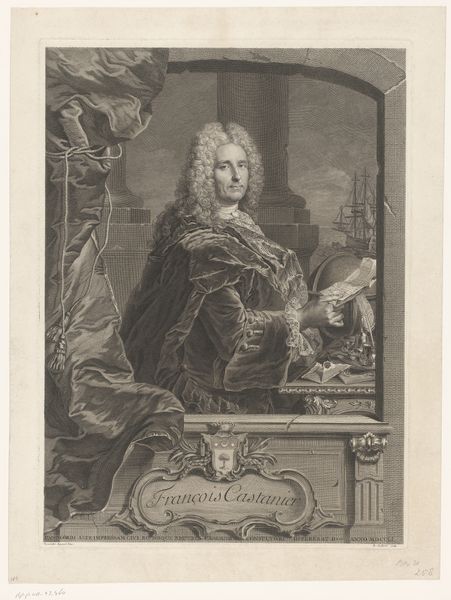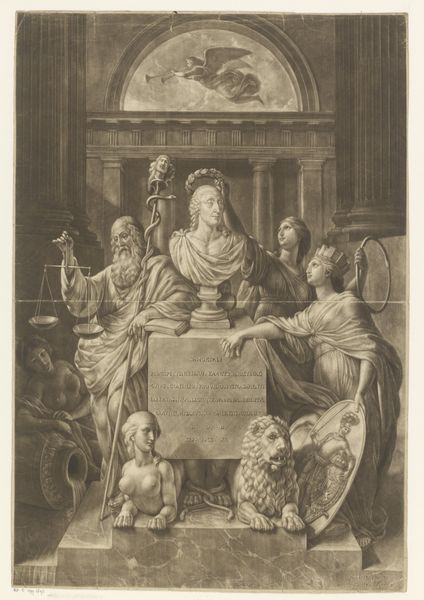
print, engraving
#
portrait
#
baroque
# print
#
history-painting
#
engraving
Dimensions: height 668 mm, width 491 mm
Copyright: Rijks Museum: Open Domain
Curator: Here we have Pierre Drevet's "Portret van Lodewijk XV van Frankrijk," made in 1723. It’s an engraving currently housed here at the Rijksmuseum. What strikes you about it? Editor: The overall effect is rather melancholic, isn't it? The dark, heavy drapery looming over the pale figure of the young king… It feels almost oppressive. Curator: The portrait showcases the young Louis XV shortly after he officially began his reign. Consider the pressures on a young monarch during the twilight of the Baroque era, a period characterized by grand displays of power and wealth amidst growing social unrest. Editor: And look at the performative elements: the crown perched precariously, the scepter he holds with what looks like a rather limp wrist, and the ermine robe sliding off his shoulder. Is he really embodying the role of a divinely ordained ruler, or is it all just a costume he's not quite comfortable in? What does it say about hereditary power when someone is thrust onto the world stage because of an accident of birth? Curator: Drevet was known for his skill in capturing minute details and textures. Notice how he renders the velvet and fur with such precision. It reflects the prevailing artistic trends of the time, a kind of hyper-realism meant to glorify power. And don't overlook the implications of creating and circulating printed portraits like this. Engravings democratized the image of the king, distributing his likeness to a broader audience. Editor: Democratized, perhaps, but certainly still controlled. It's a performance of power designed to reinforce a specific hierarchy. The artist's skill becomes another tool in the arsenal of those maintaining the status quo, perpetuating myths of royal authority even as societal fault lines are widening. Curator: So, for me, the print highlights the intricate ways in which art, power, and social identity were interwoven in 18th-century France. Editor: And for me, it prompts consideration of the historical, societal impacts of portraiture, questioning its ability to authentically capture an individual rather than reinforcing established power narratives.
Comments
No comments
Be the first to comment and join the conversation on the ultimate creative platform.
